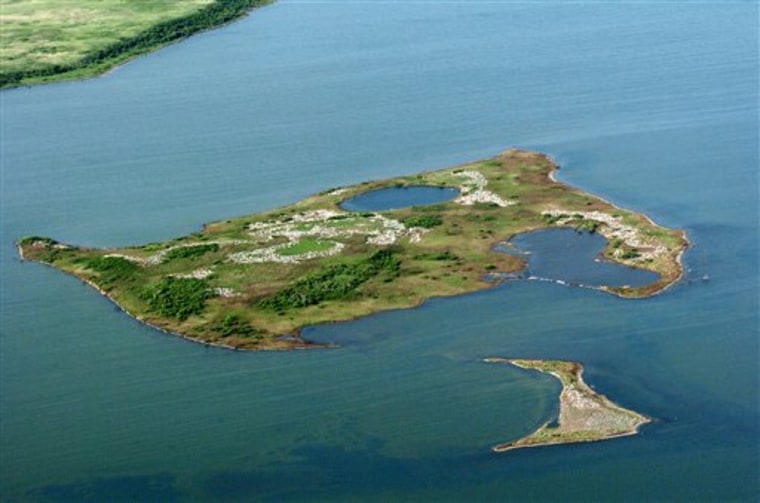From an airplane a half-mile above white pelican nesting grounds here, the giant birds are hard to miss. Measuring 6 feet from bill to tail and weighing up to 20 pounds each, the birds look like moving patches of snow on the islands of Chase Lake.
Wildlife officials estimate 18,850 breeding adults have returned to this 4,385-acre refuge in central North Dakota, which had been known for a century as the home of the largest nesting colony of white pelicans in North America. But this time last year, the nesting grounds were empty, leaving an ornithological mystery that biologists say may never be solved.
Nearly 28,000 birds took off last summer. The rookery was littered with eggs and chicks that did not survive.
Pelicans began returning in early April, and biologists hope they will stay put through September, caring for their hatchlings and feasting on small fish and foot-long salamanders from nearby prairie potholes.
"The good news is the pelicans have returned and no birds have left that we're aware of," said Ken Torkelson, a spokesman for the U.S. Fish and Wildlife Service in Bismarck. "We'd happier if 30,000 birds returned, but on a disappointment scale, this ranks very low."
The white pelican is one of the largest birds in North America, with a wingspan of nearly 10 feet. It lives about 25 years.
Biologists have been doing aerial surveys of the nesting grounds since 1972, using photographs scanned into a computer program to count the exact number of breeding birds. This year's breeding population is the lowest since 1997, when 18,364 birds were counted.
The birds abandoned the nesting ground before a survey could be taken last year. In 2000, biologists recorded 35,466 pelicans, a record.
Dave Bolin, a manager at the refuge, said the high number of pelicans five years ago may have been more than the area could support. "That may have been unnaturally high and maybe last year was a natural correction," Bolin said. "But we try not to discount anything on why they gave up their nesting effort last year."
Wildlife officials have checked air, water and soil quality at the nesting grounds. They also checked for diseases, predators and other possible factors.
Biologists this month are attaching electronic tracking equipment to 10 pelicans at the refuge to monitor their movements when they leave the colony, said Marsha Sovada, a biologist at the U.S. Geological Survey's Northern Prairie Wildlife Research Center.
"Hopefully, it will give us more insight as to what's going on," she said.
Sovada said the adult pelicans are "acting perfectly normal — just as they were before last year's event."
Long-range video surveillance cameras and extra crews are monitoring the pelicans, and fences and signs have been installed to keep out predators and people.
Medina, a town of about 330 people about 15 miles south of Chase Lake, has an image of a pelican painted on its water tower.
Bradley Moser, the city operations manager, said the pelicans' disappearance last year has lured more bird watchers to the area this year.
He said it's easy to spot pelicans as they fly from the refuge searching for food. One had to be shooed out of town, for fear it may have snapped at a child, he said.
"Everything seems back to normal, by George," Moser said. "They're back and wandering around all over. And they look healthier this year — their feathers seem brighter."
